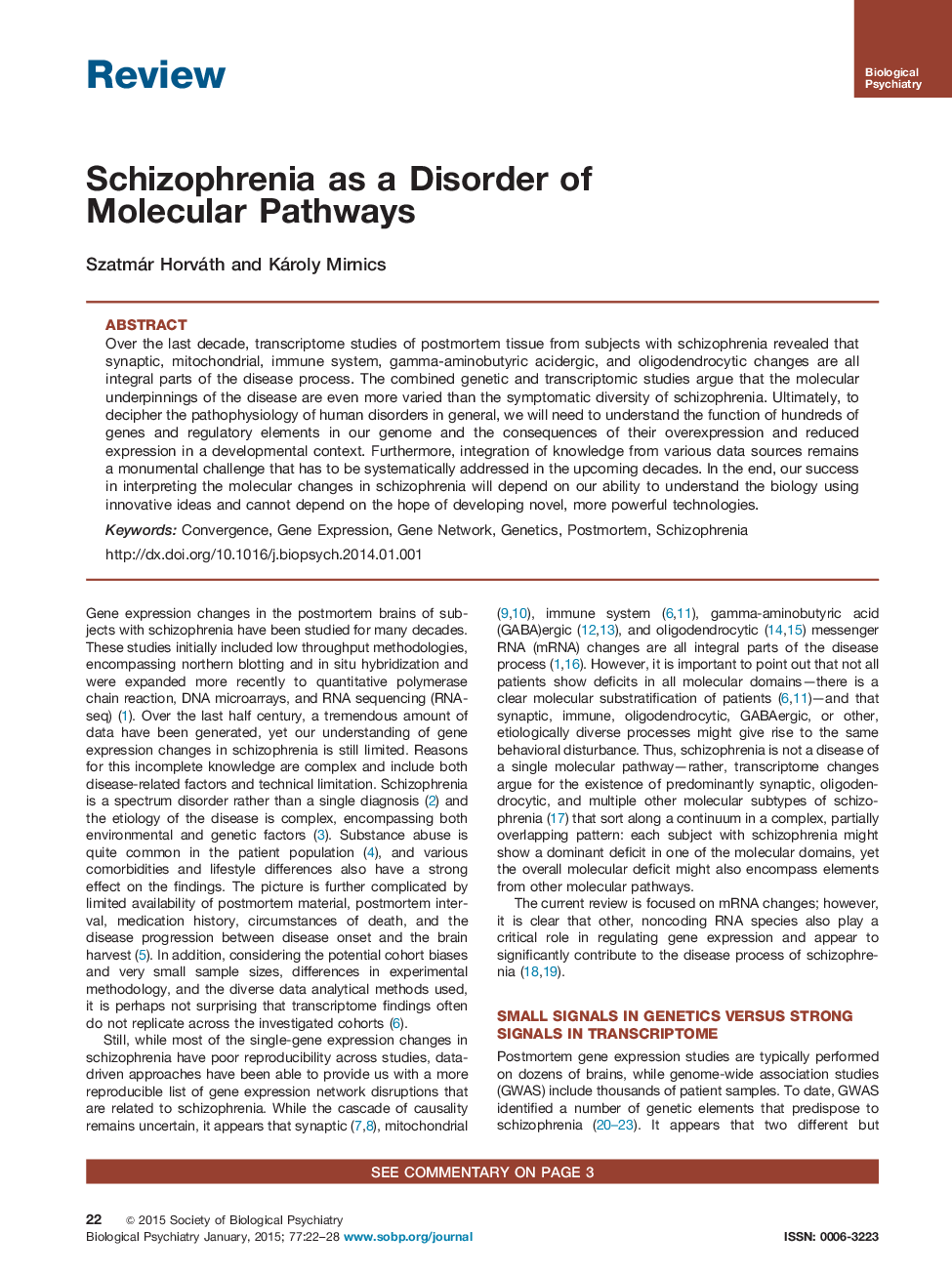| Article ID | Journal | Published Year | Pages | File Type |
|---|---|---|---|---|
| 4177275 | Biological Psychiatry | 2015 | 7 Pages |
Over the last decade, transcriptome studies of postmortem tissue from subjects with schizophrenia revealed that synaptic, mitochondrial, immune system, gamma-aminobutyric acidergic, and oligodendrocytic changes are all integral parts of the disease process. The combined genetic and transcriptomic studies argue that the molecular underpinnings of the disease are even more varied than the symptomatic diversity of schizophrenia. Ultimately, to decipher the pathophysiology of human disorders in general, we will need to understand the function of hundreds of genes and regulatory elements in our genome and the consequences of their overexpression and reduced expression in a developmental context. Furthermore, integration of knowledge from various data sources remains a monumental challenge that has to be systematically addressed in the upcoming decades. In the end, our success in interpreting the molecular changes in schizophrenia will depend on our ability to understand the biology using innovative ideas and cannot depend on the hope of developing novel, more powerful technologies.
